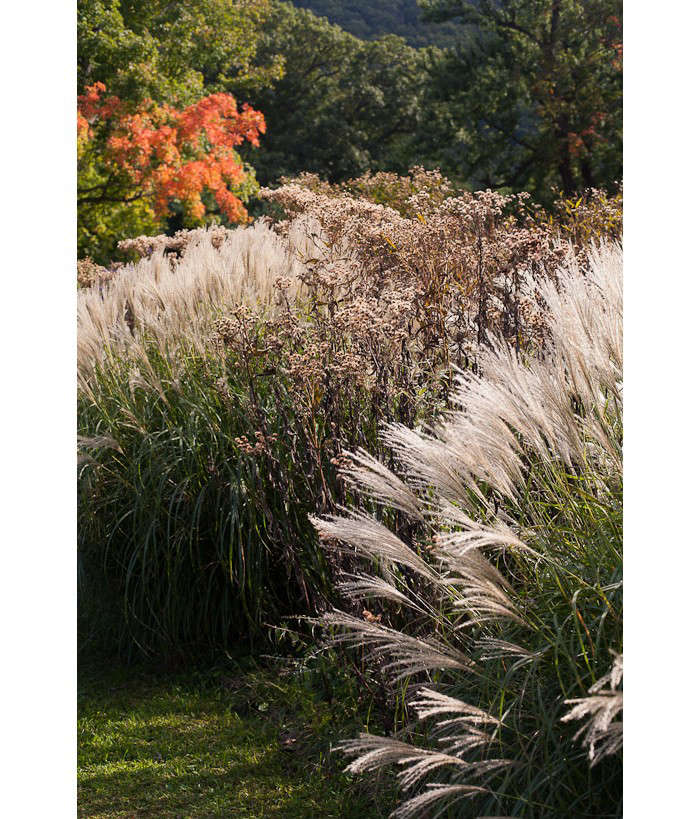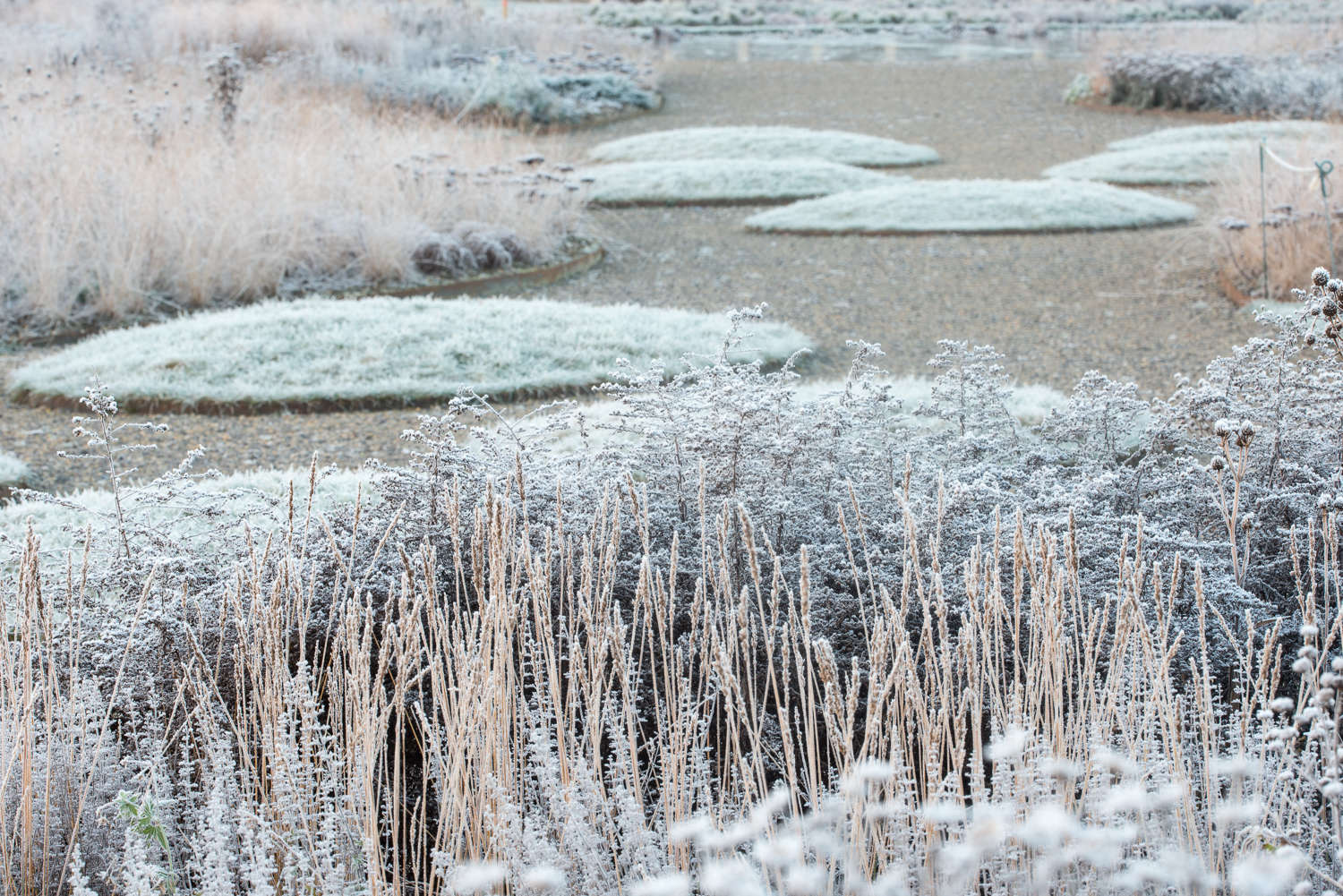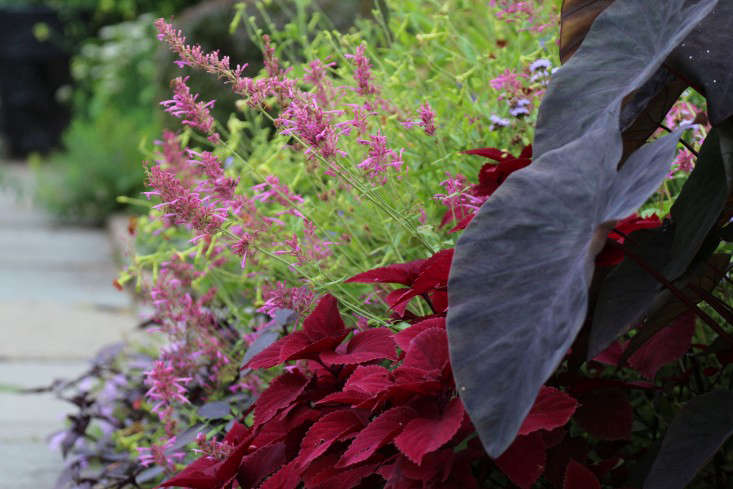Maiden Grass, Miscanthus sinensis: “Practically Perfect”
If you garden long enough you eventually come to realize there is no perfect plant. Like humans, even the best of them have their annoying habits and burdensome requirements. One of the great lessons of gardening is learning to practice the fine art of compromise. Grow roses and enjoy the gorgeous blooms but tolerate the thorns and the black spot. Relish the perfume of lilacs in the spring and ignore the inevitable powdery mildew. We all know there are millions of examples. However, there is a plant that actually comes very close to being perfect.
Miscanthus sinensis, a handsome ornamental grass frequently used in today’s natural landscapes and meadows, requires very little care. It is drought tolerant, happy to grow in all sorts of soil, and not prone to attacks by insects, diseases, or deer.
Read on for everything you need to know:

While you may be familiar with Miscanthus as a very large specimen plant, it is estimated that there are as many as 50 forms of maiden grass available for sale in the U.S. If you have a small garden or want something striking for a container there are many dwarf and mid-size cultivars to choose from.

What the various types of maiden grass have in common is their amazing flowers: feathery plumes which appear in late summer or early fall carried high above graceful arching stems. When caught by a breeze, the flowers dance and sway, making their part of the garden come alive with gentle movement. Add to that the striking fall color of many varieties, and you have a plant that enhances virtually any garden.

Cheat Sheet
- In addition to making a show-stopping specimen, large Miscanthus can anchor the back of a mixed border or be planted en masse as an informal hedge or privacy screen.
- Miscanthus will grow in dry environments but also tolerates wet conditions, high humidity and salt so it can be planted successfully at water’s edge near the ocean as well as ponds, lakes and streams.
- This plant works beautifully in prairie style plantings combined with natives such as asters, joe pye weed (Eupatorium maculatum), golden rod (Solidago), milkweed (Asclepius), Culver’s root (Veronicastrum virginicum) and New York Ironweed (Vernonia noveboracensis).

Keep It Alive
- Thrives in full sun in zones 5 to 9, with some cultivars able to tolerate zone 4.
- Miscanthus is a clump forming grass and needs to be rejuvenated by division every few years when the center of the clump begins to dry out.
- After a hard freeze, leave the dead flowers on the plant to beautify the winter landscape and feed wildlife. Cut the dry foliage down to the ground in early spring just before new growth appears.

It is interesting that Miscanthus works so well with native plants because it is an import from Asia where it is found in China, Japan, Taiwan, and Korea. It is particularly widespread in Japan, where it is known as Susuki Grass and is used as fodder for cattle, material for thatching roofs and in making paper. It began to be imported to Europe and North America about 100 years ago when it was fashionable in Victorian gardens.

There is some concern in certain areas that Miscanthus has escaped into the wild and become invasive. It does tend to self-sow, particularly among varieties that flower early in the season. You can prevent unwanted spread by pruning off the flower heads before they go to seed or by choosing late-flowering varieties whose seeds will not survive cold winters. Self-sowing aside, Miscanthus is generally well behaved. Its clumps will widen but only very slowly over time. Make sure to plant it where there will be room for its eventual spread.
One exceptionally tall cultivar, Giant miscanthus (Miscanthus x giganteus), reaches 12 feet in height and is proving to be a promising environmentally friendly cash crop. Testing in the U.S. has shown it can be used as a biofuel for heat and power generation. It is currently used commercially in Europe for that purpose and also to make ethanol. Apparently professional growers are excited about this plant for many of the same reasons that home gardeners like it so much: it is exceptionally easy to grow and does not require chemical pesticides or fertilizers. Good for growers and also good for the earth, Miscanthus is definitely a win-win.
N.B.: This post is an update; it was first published June 2017.
Wondering why grasses are the revolution of landscaping? See:
- Grasses 101: A Field Guide to understand their diversity and application.
- For other drought tolerant plants with year round interest, see Lavender 101.
Finally, get more ideas on how to plant, grow and care for various grasses with our Grasses: A Field Guide.
Additionally, get more ideas on how to successfully plant, grow, and care for maiden grass with our Maiden Grass: A Field Guide.








Have a Question or Comment About This Post?
Join the conversation